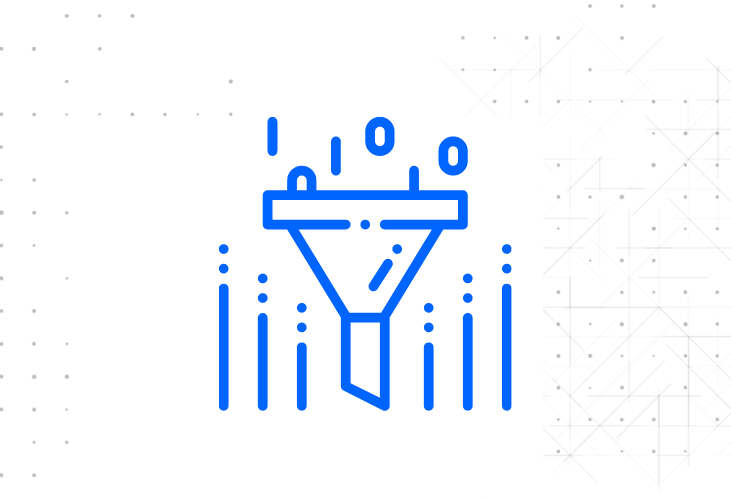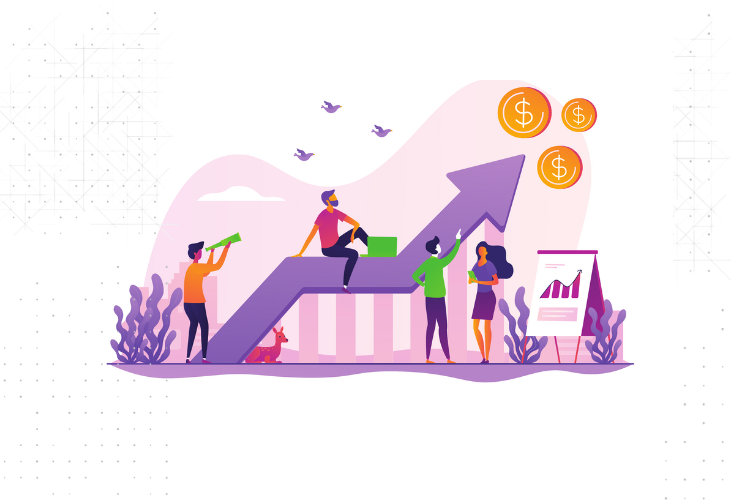Understanding Location-Based Push Notifications With Real Case Examples
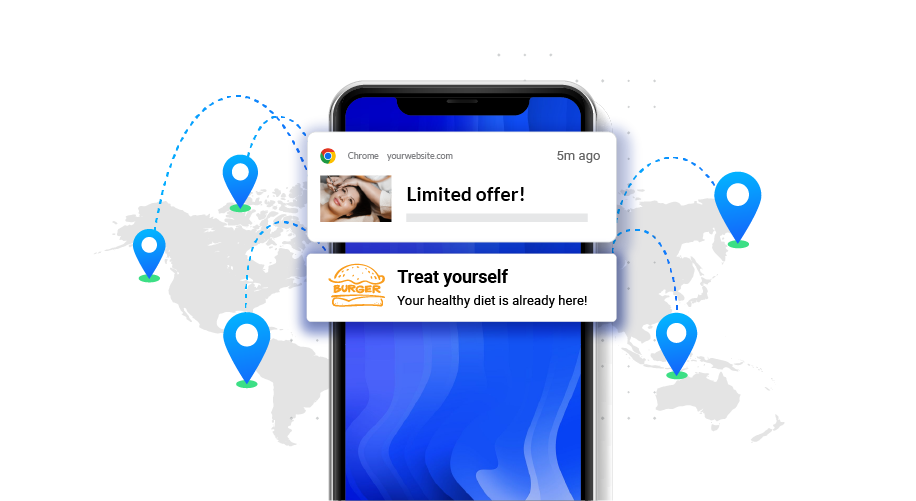
Table of Contents
- What is Geolocation or Location-Based Push Notification?
- Geotargeting
- Geofencing
- Benefits of Using Location-Based Notifications in Customer Messaging Strategy
- High Efficiency
- Enhanced Engagement Rates
- Improved ROI
- New Insights Available
- Tips and Best Practices to Set Up Your First Location-Based Campaign
- Specify When To Send The Notification
- Attach Custom Links
- Use Rich Media
- 3 Creative Cases of Location-Based Push Notification Campaigns
- Sephora’s Airport Push Notifications
- Sunshine Personalized Weather Updates
- Starbucks Happy Hour
- Conclusion
Show more
It’s Monday noon, and Adam is thinking about what to have for lunch. The weather is nice, and he opts for enjoying a light meal out of the office instead of ordering takeout. A few minutes later, he receives a notification from a local café about their lunch deals. The options look very appetizing, and Adam decides to give them a try.
This was an example of location-based marketing, a strategy well-known for its effectiveness. It’s a personalization strategy that enables marketers to send out location-based push notifications that are very contextual and give strong incentives for subscribers to act on them. In the above example, the success of the push notification was based on Adam’s location, and his past behavior of visiting the cafe. His location at that exact time provided the café with information about Adam’s needs at that precise moment and helped to attract a new customer.
What is Geolocation or Location-Based Push Notification?
Geolocation or location-based push notifications are messages sent specifically to where the person is currently located. Depending on their type, location-based alerts can be viewed on mobile devices, or desktops as well.
Geotargeting
Geotargeting is a general term to describe location-based push notifications. Geotargeting can use the zip code of the home address, or target a city, a country, etc. This strategy uses existing segments of your customer data to deliver your messages to geographically relevant users.
Geotargeting can be a great tool if you, for example, have a brick-and-mortar location and want to promote it in the local territory or you are an online business having a country-specific holiday sale. One thing to remember is that this method does not target the real-time location.
Geofencing
Geofencing is another type of geotargeting, and it, on the other hand, is used for real-time location targeting. As the name suggests, geofence push notifications target people located within the boundaries or “fences” of a certain region. Geofencing works on GPS data from users’ devices, triggering push notifications once the people are in your targeted territory.
Through geofencing, you can present very specific, narrow-down information to a segment of customers, who at that moment are most likely to act on it. The example of a café that targeted Adam with their lunch deals is an example of effective geofencing.
Benefits of Using Location-Based Notifications in Customer Messaging Strategy
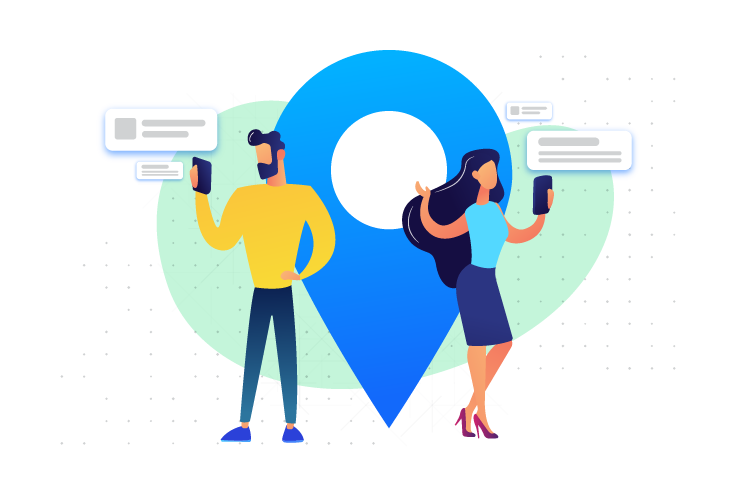
Whether you want to deliver a discounted offer for people living near your physical store or offer free shipping to orders from neighboring countries, location-based push notifications can become an effective part of your messaging strategy when you want to engage potential or existing customers.
Here are a few undeniable benefits of location-based notifications for your brand.
High Efficiency
The more targeted the message, the better the result. Location-based notifications allow for very nuanced segmentation, helping to design campaigns that are highly relevant. Understanding users’ needs increases the effectiveness of your push notifications significantly while helping you reduce your campaign spending. This boost in performance goes hand in hand with improved connections with customers, as more relevant offers ensure higher levels of customer satisfaction.
Enhanced Engagement Rates
The high efficiency of push notifications doesn’t come alone but brings enhanced engagement rates. Since the main strength of location-based notifications is their nuanced targeting, if managed properly, they can be highly relevant to recipients. This potential to offer them the right product at the right time can result in 42% of customers interacting with the brand more, as they find value and interest in your offer.
Improved ROI
Push notifications boast a 3500% ROI, a result that’s a combination of the effectiveness and affordability of this channel. This is also the case for location-based push notifications. Because geofencing allows you to send notifications to people who are directly in your location, you’re spending your budget on customers that are more likely to be enticed by your offer and give it a try.
New Insights Available
Last but not least, location-based push notifications are gold for any business that uses data to understand their customers better. Through a detailed study of your campaign analytics, you’ll get insights into which territories yield better results, what is the best time to send out your notifications, which customer segment is more interested, and many more. You can then use this data to optimize and improve your future push notification campaigns.
Tips and Best Practices to Set Up Your First Location-Based Campaign
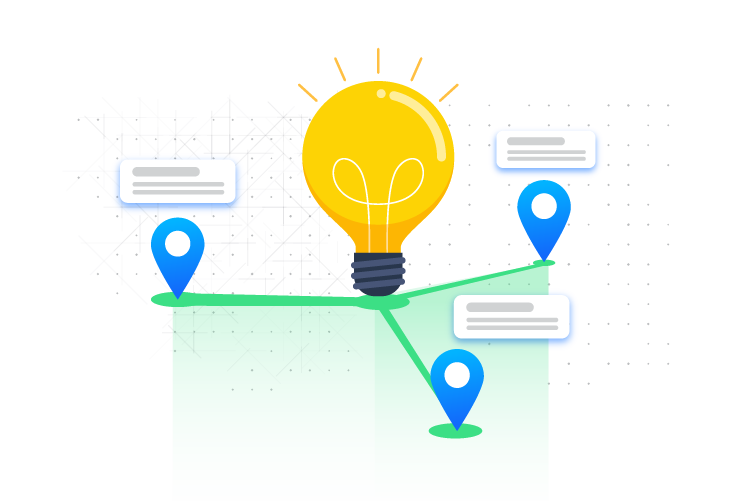
Now that we know how location-based push notifications can help improve your business outcomes, you might be tempted to set up your first location-based campaign. But before you start, there are a few tips and best practices that you’ll need to consider to ensure your subscribers have a positive experience.
Specify When To Send The Notification
The timing of your push notifications plays a crucial role in their success. Therefore, when planning your campaign, make sure to plan ahead when you are going to send the notifications. This is the case both for more broad geotargeting and geofencing.
In the case of geotargeting, if you are sending messages to subscribers across the globe, make sure to consider the time zones. Do a time zone check to avoid any confusion, and deliver your messages when they are most likely to be read. Try to understand the best time to send push notifications to your audience and schedule your messages based on that.
For geofencing, you need to determine when the user comes in contact with your notification. This can be done upon entry, during the dwelling, and close to the exit. Choosing the right time will depend on your campaign goal.
Entry and dwelling – Sending a notification when a subscriber just entered the territory or has already spent some time there is an effective strategy if you are looking to improve the engagement.
Exit – Sending notifications when the person is about to exit the “fenced” territory is a great strategy for gathering feedback or trying to better connect with them through sending credits or thanking them for a visit.
Attach Custom Links
Another thing you need to specify is where the recipient is redirected once they click on your message. The interaction with your campaign is not limited to seeing your notification: they need to be able to respond to it. When you have the chance, attach a custom link that redirects the recipients to a relevant website or landing page, where they can learn more about what your offer is all about.
Use Rich Media
Texts that include emojis, gifs, or visuals are known as rich push notifications. As they catch the eye because of their vibrant colors, they can be extremely effective, having 56% higher open rates. These visuals give the user an idea of what the message is about even before they read it while making the alert more fun and engaging. However, because not all browsers support the rich format, you’ll need to segment users so that only those with supported devices and operating systems receive them.
3 Creative Cases of Location-Based Push Notification Campaigns
Having a large scope of personalization and impressively precise targeting, location-based push notifications offer immense opportunities for the growth of brands. Many of them have realized this already and started coming up with quirky, fun, and creative push notifications. Here are a few of those ideas if you are looking for some inspiration.
Sephora’s Airport Push Notifications
Airport TSA’s have caused pain to many, and beauty products happen to be the victims quite often. The beauty retailer Sephora knows this too well and cleverly uses it to their advantage with their airport push notifications.
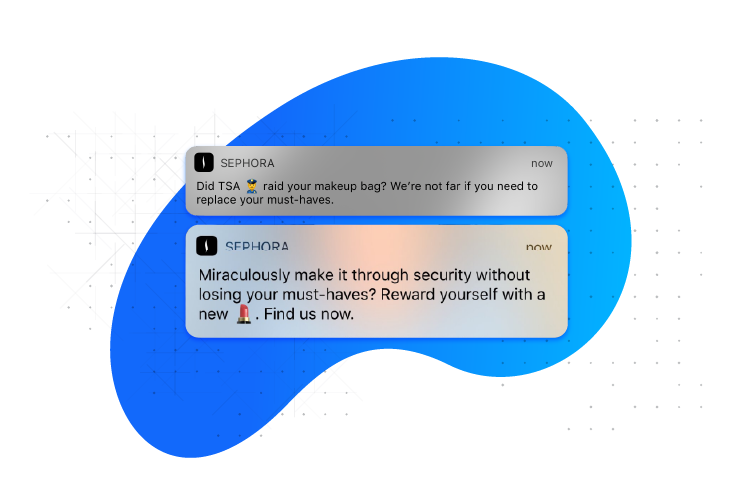
Sephora cleverly uses geofencing at the airports where they have a physical location. The timing, the location, and the content of the messages are just spot-on, bringing the “right place, right time” to a whole new level.
Sunshine Personalized Weather Updates
As you might have guessed, Sunshine is a weather app. Naturally, the content is heavily location-based; otherwise, the app wouldn’t be able to function properly. However, instead of simply reporting the weather, they add sweet personalized notes adjusted to recipients’ tastes: one user will receive a “You’ll feel cold,” while for someone else, it’ll be an “It’s a nice day,” depending on their preferences. Then they add a line or two to customize the message further.
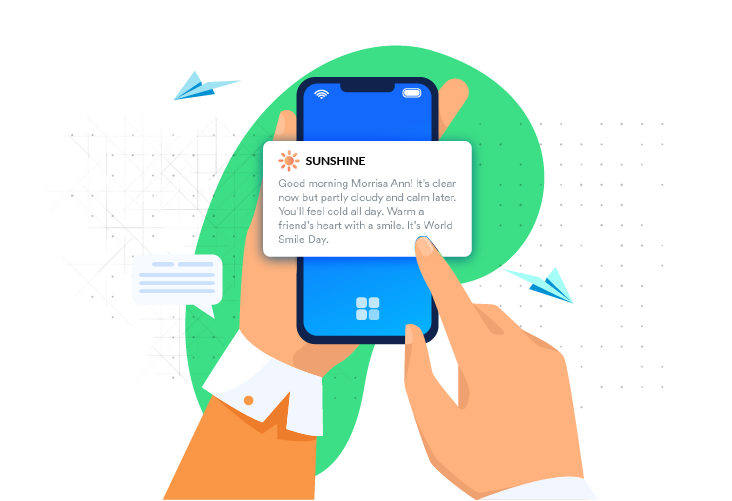
Starbucks Happy Hour
Starbucks is another big name that uses location-based push notifications (geofencing, to be precise) to drive sales. When users are in the nearby area or cross the store, the coffee giant sends them a little notification about happy hour deals or other promotions to get the customers through the door.
In some cases, they often combine location-based campaigns with personalized drink suggestions, using the information about previous purchases.
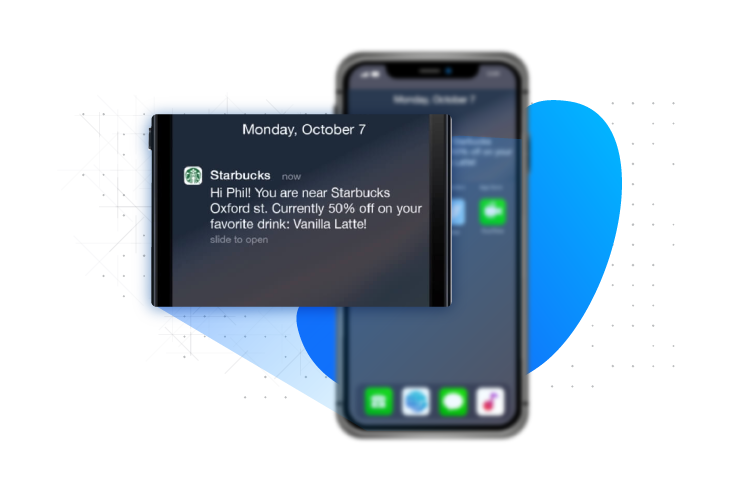
Conclusion
Location-based push notifications can be a hyper-effective tool in every marketer’s arsenal. These tips and ideas can become a good jumping-off point if you want to give them a go, and see how they work for your brand. Keep these best practices in mind, but also be ready to test and experiment. When planned and implemented correctly, location-based push notifications can deliver impressive results.
